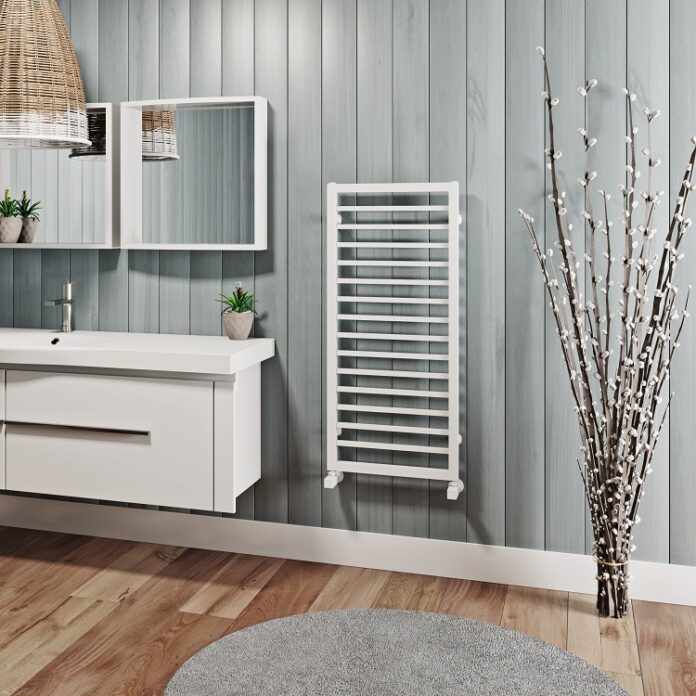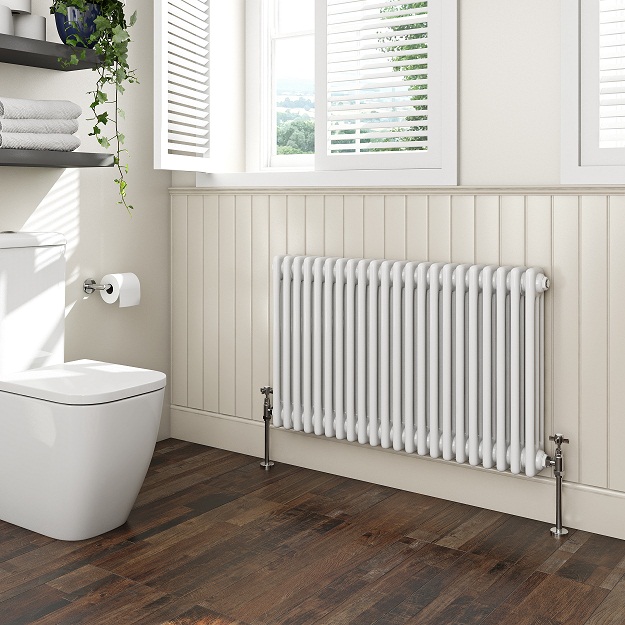During those long and lazy summer months, it’s all too easy to put the cold, dark days of winter firmly to the back of your mind—and why wouldn’t you? After all, it’s nice to think of your home as that warm and cosy place in which you unwind and relax, rather than a chilly old hole in which you’re left shivering in your bones.
The same can certainly be said about your bathroom. If it’s a cold and uninviting place at certain times of the year, chances are your heating isn’t quite up to the job.
Your choice of radiator can be vitally important when renovating your bathroom. Not only will it keep your space feeling warm and welcoming, it can also be used to serve other functions, like warming towels and saving on space.
What do you need to consider before choosing your bathroom radiator?
There are several things you’ll need to think about before choosing your bathroom radiator.
First things first, you’ll need to know which type of heating system you have. Plumbed central heating is most common, although some modern homes now use an electric system, where radiators are controlled individually throughout the property.
If you have plumbed central heating, it’s important you know where your pipes are located, as it is easier to make a like for like replacement, rather than reconfiguring your plumbing, which could be costly.
TIP: Warma UK has helped thousands of customers improve their homes energy efficiency and reduce their energy bills all with the help of government funded grants. Check the guide how to qualify for a central heating grant.
Next, make sure the wall upon which you want to place your radiator can take the weight. A solid brick wall is more suitable than a partition wall. Kris from Designer Homes Perth, a renovation specialist, advises that you seek advice from a qualified builder to prevent any costly mistakes.
Finally, you’ll need to work out your required BTU output. BTU stands for British Thermal Unit and is the standard measure of heat output for radiators. In order to do this, you’ll need to measure the dimensions of your room and input these into an online BTU calculator.
Once you know all of this, it’s time for the fun part to begin: choosing your new bathroom radiator. To help provide some initial inspiration, here are 5 neat bathroom radiator ideas.
1.Heated towel rail
Something that isn’t always obvious to many homeowners is that they could switch their radiator for a heated towel rail. The most common type of heated towel rail features a ladder design, upon which you can warm several towels—perfect for that precise moment you step out of the shower or climb out of the bath.
Along with windows which insulate against the cold, a heated towel rail could be the best bathroom investment you’ve ever made.
2.Column radiator
If you have very little wall space to play with, sometimes the only way is up! A column radiator can fit into a narrow gap, for example between a shower enclosure and a basin, whilst keeping your bathroom nice and warm.
Column radiators are ideal for small bathrooms, like ensuites or cloakrooms, and come in a range of traditional or contemporary designs to suit all tastes.
3.Horizontal radiator
Radiator design has come on a long way since the cumbersome white behemoths of old. Nowadays, there are a whole host of shapes, designs, colours and finishes to choose from in a range of different materials.
Horizontal radiators are a great way to save money because, more often than not, you can simply make a like for like replacement. They are also perfect for the space beneath a window sill.
4.Cast iron radiator
Perfect for traditional bathroom spaces, cast iron radiators utilise the latest precision engineering techniques to create intricate designs. Whilst cast iron isn’t exactly cheap, especially when compared to mild steel or aluminium, it will produce an authentic look and feel, if that is what you’re looking to achieve.
5.Underfloor heating
OK, technically not a radiator but underfloor heating should be a real consideration if you’re planning a full bathroom refurb. Modern underfloor heating systems have come on in leaps and bounds in recent years and can be bought and installed for less than you’d think.
Underfloor heating saves on space, with no radiator units required and provides warm floors which are especially comforting during the winter. Thanks to the latest smart thermostats which learn optimum times and temperatures, it only needs to be switched on when absolutely necessary.
But can underfloor heating save money on your energy bills? According to a recent Which? report, in which 157 underfloor heating owners were surveyed, 10% stated it had decreased their bills, whilst 28% stated bills had increased. A further 36% said their energy costs hadn’t changed. So, the jury is most definitely out on whether it can save you money in the long run.
With so many different radiator options to choose from, it’s now even easier to turn the heat up on your bathroom design.






















